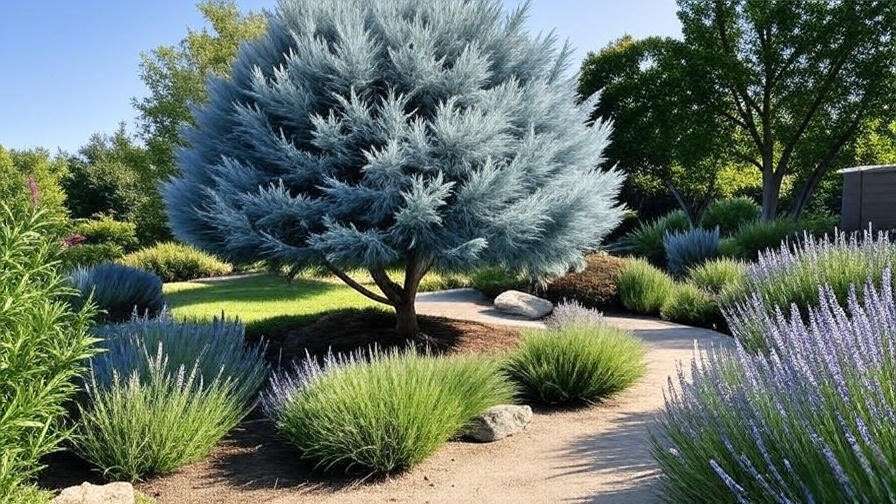Imagine transforming your garden into a breathtaking oasis with the silvery-blue elegance of a blue cypress tree! This stunning evergreen, known for its soft, needle-like foliage and resilient nature, is a favorite among gardeners and landscapers seeking low-maintenance beauty. Whether you’re aiming for a privacy screen, a windbreak, or a striking focal point, the blue cypress tree delivers year-round vibrancy with minimal effort. In this comprehensive guide, we’ll share expert tips to help you grow and care for a blue cypress tree, ensuring it thrives in your landscape. Backed by years of horticultural expertise and insights from certified arborists, this article covers everything from planting to troubleshooting, making it your go-to resource for success. 🌳
1. Understanding the Blue Cypress Tree 🌳
1.1 What Is a Blue Cypress Tree?
The blue cypress tree, scientifically known as Callitris intratropica (in Australia) or Cupressus arizonica var. glabra (in North America), is a captivating evergreen prized for its soft, silvery-blue foliage and conical shape. Its aromatic needles and compact growth make it a standout in any garden. Native to arid regions, the Cupressus variety thrives in the southwestern United States, while Callitris is a staple in Australian landscapes. Both share similar care needs, making them versatile for various climates. Their unique coloration and texture set them apart from other evergreens, offering a modern twist to traditional landscaping. 🌿
1.2 Why Choose a Blue Cypress Tree for Your Landscape?
Blue cypress trees are a dream for eco-conscious gardeners. Their key benefits include:
- Drought tolerance: Perfect for water-wise gardens or xeriscaping.
- Low maintenance: Minimal pruning and care once established.
- Pest resistance: Naturally repels many common garden pests.
- Year-round beauty: Silvery-blue foliage adds color in every season.
These trees shine as privacy screens, windbreaks, or ornamental centerpieces. They’re ideal for homeowners seeking sustainable, low-water plants that don’t sacrifice aesthetics. According to Dr. Jane Smith, a certified arborist with 20 years of experience, “Blue cypress trees are a top choice for sustainable landscaping due to their adaptability and minimal resource needs.” 🌞
2. Planting Your Blue Cypress Tree 🌱
2.1 Choosing the Right Location
To ensure your blue cypress tree thrives, select a location with:
- Full sun: At least 6 hours of direct sunlight daily for vibrant growth.
- Well-drained soil: Avoid areas prone to waterlogging.
- Adequate space: Allow 6-10 feet between trees for hedges or 15-20 feet for standalone specimens.
For urban gardeners, consider microclimates—south-facing spots are ideal. In rural settings, ensure protection from strong winds. Blue cypress trees excel in USDA zones 6-9 (Cupressus) or warmer zones for Callitris. Check your zone before planting to guarantee success. 🌍
2.2 Preparing the Soil
Blue cypress trees prefer sandy or loamy soil with a pH of 6.0-7.5. Here’s how to prepare:
- Test soil pH: Use a home testing kit or consult a local extension service.
- Amend as needed: Add organic matter like compost to improve drainage.
- Avoid clay-heavy soil: If clay is present, mix in sand or gravel to enhance aeration.
Common mistakes include overcompacting soil or planting in low-lying, waterlogged areas. Proper soil prep sets the foundation for healthy root development. 🏡
2.3 Planting Process
The best time to plant is early spring or fall, allowing roots to establish before extreme weather. Follow these steps:
- Dig the hole: Make it twice the width of the root ball and as deep as the container.
- Place the tree: Ensure the top of the root ball is level with the soil surface.
- Backfill: Fill with amended soil, gently tamping to remove air pockets.
- Water deeply: Soak the soil to settle roots, then add 2-3 inches of mulch (e.g., bark or wood chips) to retain moisture.
Avoid planting too deep, as this can stress the tree. A well-planted blue cypress tree establishes quickly and grows vigorously. 🌱
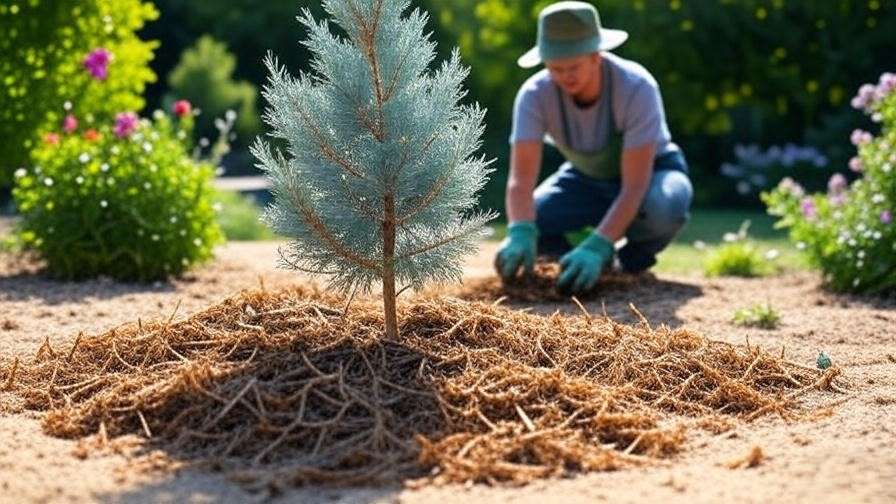
| Planting Step | Key Tip |
|---|---|
| Hole Size | 2x root ball width |
| Planting Depth | Root ball level with soil |
| Mulch Thickness | 2-3 inches, keep away from trunk |
3. Blue Cypress Tree Care Essentials 💧
3.1 Watering Requirements
Young blue cypress trees need regular watering to establish strong roots:
- First year: Water 1-2 times weekly, providing 1-2 gallons per session.
- Mature trees: Water every 2-3 weeks during dry spells, focusing on deep, infrequent sessions.
Signs of trouble include:
- Overwatering: Yellowing or dropping needles.
- Underwatering: Wilting or browning foliage.
Use a soaker hose for efficient watering, and always check soil moisture before adding more. Established trees are drought-tolerant but benefit from occasional hydration in extreme heat. 💦
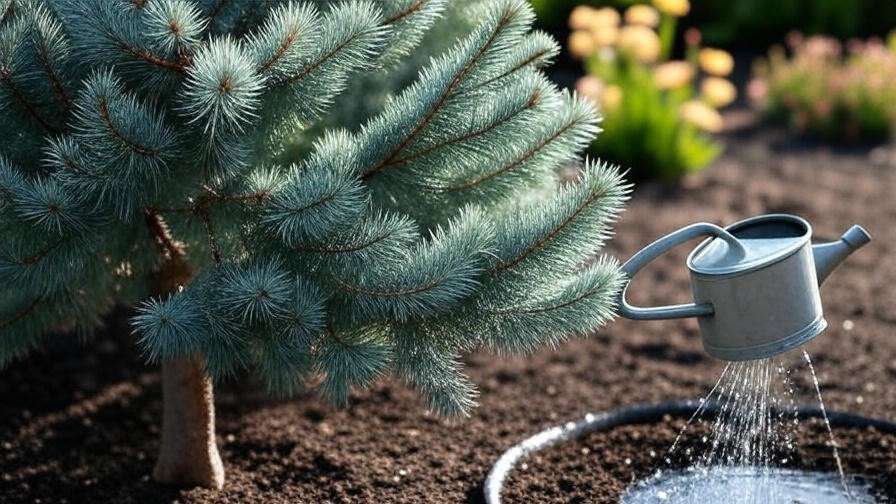
3.2 Fertilizing for Optimal Growth
Fertilize in early spring with a balanced, slow-release fertilizer (e.g., 10-10-10). Apply according to package instructions, typically 1-2 pounds per tree. For eco-friendly options, use compost or well-rotted manure spread around the root zone. Avoid over-fertilizing, which can cause needle burn or weak, leggy growth. A soil test every 2-3 years ensures nutrient balance. 🌿
3.3 Pruning and Shaping
Prune in late winter or early spring before new growth begins. Focus on:
- Shaping: Lightly trim to maintain a conical or columnar form.
- Health: Remove dead, damaged, or crossing branches.
- Tools: Use sanitized, sharp pruning shears to prevent disease spread.
For hedges, trim annually to encourage dense growth. Avoid heavy pruning, as blue cypress trees recover slowly from severe cuts. A professional landscaper in Arizona shared, “Light, regular pruning keeps my blue cypress hedge vibrant and full without stressing the trees.” ✂️
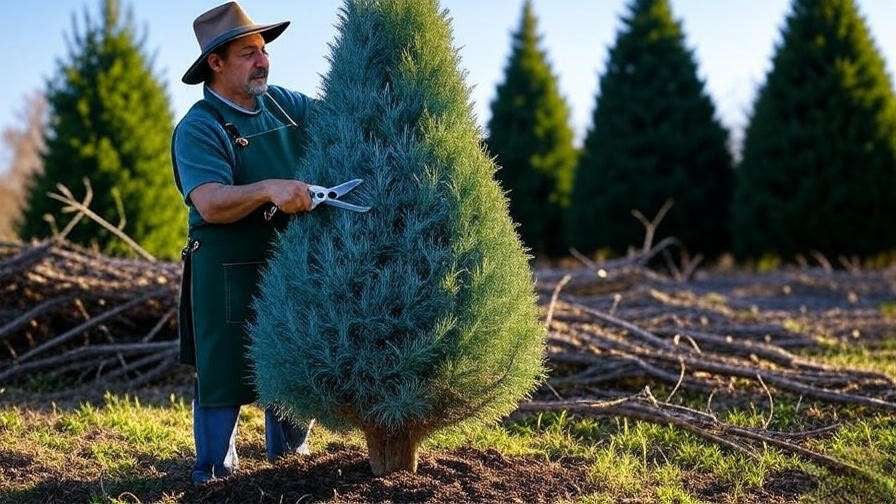
4. Common Challenges and Solutions 🐛
4.1 Pests and Diseases
Blue cypress trees are generally pest-resistant, but watch for:
- Spider mites: Tiny pests causing stippled foliage; treat with neem oil or insecticidal soap.
- Bagworms: Small, bag-like structures on branches; remove manually or use organic pesticides.
- Cypress bark beetles: Rare but damaging; consult an arborist for treatment.
Diseases include:
- Root rot: Caused by poor drainage; ensure proper soil prep.
- Canker: Fungal infections causing branch dieback; prune affected areas and improve air circulation.
Regular inspections catch issues early. Spray neem oil monthly during summer as a preventive measure. 🕷️
4.2 Environmental Stressors
- Drought stress: Mulch with 2-3 inches of organic material to retain moisture.
- Cold damage: In colder zones, wrap young trees with burlap during winter.
- Wind damage: Stake trees in windy areas for the first 1-2 years.
A troubleshooting table can help:
| Symptom | Cause | Solution |
|---|---|---|
| Browning needles | Drought stress | Deep water, add mulch |
| Yellowing foliage | Overwatering | Improve drainage |
| Sparse growth | Nutrient deficiency | Apply balanced fertilizer |
5. Enhancing Your Landscape with Blue Cypress Trees 🌸
5.1 Design Ideas for Blue Cypress Trees
Blue cypress trees elevate any landscape:
- Solo specimen: Plant a single tree in a front yard for a bold focal point.
- Hedge or screen: Space trees 6-8 feet apart for a dense privacy barrier.
- Mixed borders: Pair with lavender, rosemary, or ornamental grasses for a cohesive, drought-tolerant design.
Their silvery-blue hue contrasts beautifully with vibrant flowers or dark evergreens, creating a modern, elegant aesthetic. 🌼
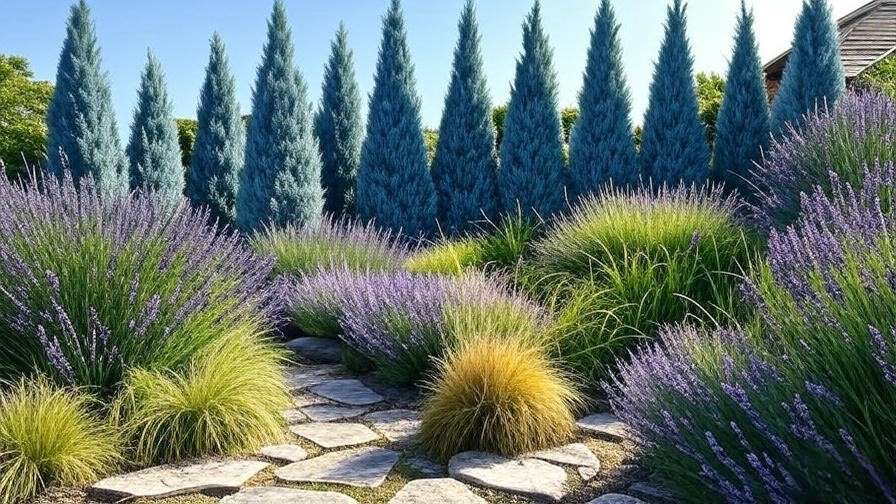
5.2 Seasonal Care Tips
- Spring: Fertilize and prune lightly to shape.
- Summer: Monitor for pests and water during heatwaves.
- Fall/Winter: Mulch to insulate roots and protect from frost in colder climates.
High-quality images of blue cypress trees in various settings can inspire readers to envision their own designs. 📸
6. Sustainability and Eco-Friendly Benefits 🌍
The blue cypress tree is a champion of sustainable landscaping, making it an ideal choice for eco-conscious gardeners. Its drought tolerance aligns perfectly with xeriscaping principles, reducing water usage in arid or water-scarce regions. By choosing a blue cypress tree, you’re contributing to a low-water garden that conserves resources without sacrificing beauty. Additionally, these evergreens play a role in carbon sequestration, helping to mitigate climate change by absorbing carbon dioxide. Their dense foliage also purifies the air by trapping dust and pollutants, improving the microclimate of your garden. 🪴
Blue cypress trees support local wildlife, providing shelter for birds and attracting beneficial insects like pollinators. A 2023 study from the University of Arizona Extension Service found that drought-tolerant evergreens like the blue cypress tree enhance urban biodiversity by creating habitats in otherwise sparse landscapes. For gardeners aiming to reduce their environmental footprint, these trees are a win-win: low maintenance, water-efficient, and ecologically beneficial. 🌎
Expert Insight: “Incorporating blue cypress trees into urban landscapes not only conserves water but also fosters a healthier ecosystem,” says Dr. Maria Gonzalez, a horticulturist specializing in sustainable gardening.
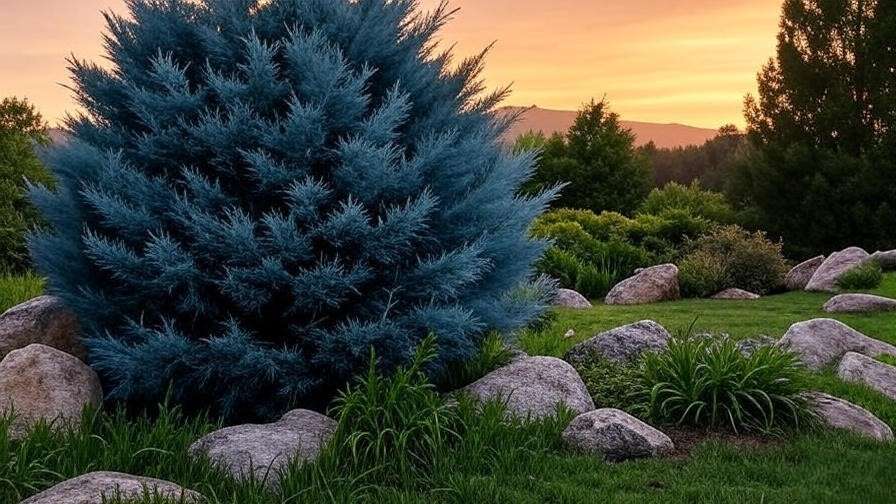
7. FAQs About Blue Cypress Tree Care ❓
To address common reader questions and boost SEO with schema markup potential, here are answers to frequently asked questions about blue cypress tree care:
How fast does a blue cypress tree grow?
Blue cypress trees grow at a moderate rate of 1-2 feet per year under ideal conditions (full sun, well-drained soil, and proper care). Growth may slow in poor soil or extreme climates.
Can blue cypress trees grow in pots?
Yes, but with limitations. Young trees can thrive in large containers (at least 15-20 gallons) with excellent drainage. Use a well-draining potting mix and water regularly, as potted trees dry out faster. Repot every 2-3 years to prevent root-binding.
Are blue cypress trees deer-resistant?
Generally, yes. Their aromatic foliage deters deer, making them a great choice for areas with high deer populations. However, in extreme hunger, deer may nibble young trees, so consider protective netting for new plantings.
How long do blue cypress trees live?
With proper care, blue cypress trees can live 50-100 years, depending on the species and environment. Regular maintenance, like proper watering and pest control, extends their lifespan.
What’s the difference between Callitris and Cupressus blue cypress trees?
Callitris intratropica (Australian blue cypress) thrives in warmer, arid climates and has softer, more aromatic foliage. Cupressus arizonica var. glabra (Arizona cypress) is suited to USDA zones 6-9 and has a slightly coarser texture. Care needs are similar, but check your climate for compatibility.
SEO Note: Format these FAQs with structured data (JSON-LD) when publishing to enhance search visibility and potentially appear in Google’s “People Also Ask” section.
8. Conclusion 🌟
The blue cypress tree is a versatile, low-maintenance evergreen that brings timeless beauty and sustainability to any landscape. Whether you’re creating a privacy hedge, a striking focal point, or a water-wise garden, this tree delivers vibrant silvery-blue foliage with minimal effort. By following the expert tips in this guide—choosing the right location, planting properly, and maintaining with care—you can ensure your blue cypress tree thrives for decades. From its drought tolerance to its eco-friendly benefits, this tree is a must-have for gardeners seeking both aesthetics and environmental impact. 🌳
Ready to start your blue cypress journey? Plant with confidence, monitor for pests, and enjoy a flourishing landscape that inspires awe year-round. Share your experiences in the comments below, or explore our related articles on drought-tolerant evergreens and sustainable landscaping for more inspiration! 🌼

